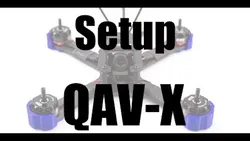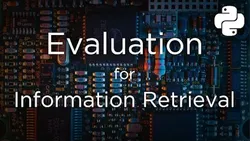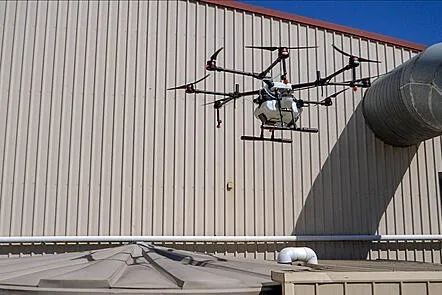
How to setup a Lumenier QAV X 
This course provides a comprehensive guide to setting up a Lumenier QAV X. It covers flashing the KISS FC, Taranis setup, telemetry, KISS configuration, calibrating ESCs, motor tests, PIDs, and finishing the build. It also includes instructions for setting up failsafe and a final test flight. This course is ideal for anyone looking to build and fly a Lumenier QAV X. ▼
ADVERTISEMENT
Course Feature
![]() Cost:
Cost:
Free
![]() Provider:
Provider:
Youtube
![]() Certificate:
Certificate:
Paid Certification
![]() Language:
Language:
English
![]() Start Date:
Start Date:
On-Demand
Course Overview
❗The content presented here is sourced directly from Youtube platform. For comprehensive course details, including enrollment information, simply click on the 'Go to class' link on our website.
Updated in [February 21st, 2023]
Flash the KISS FC
Install XSR
Taranis setup
Telemetry 101
KISS Configuration
Calibrate ESCs
Motor Tests
PIDs
Finish the rest of the build
Final test and Failsafe setup
Test Flight
(Please note that we obtained the following content based on information that users may want to know, such as skills, applicable scenarios, future development, etc., combined with AI tools, and have been manually reviewed)
This course will teach learners how to setup a Lumenier QAV X, a popular quadcopter frame. Learners will learn how to flash the KISS FC, install XSR, setup Taranis, understand telemetry, configure KISS, calibrate ESCs, perform motor tests, tune PIDs, finish the rest of the build, set up failsafe, and test flight. This course is ideal for those who are looking to build their own quadcopter and want to learn the basics of setup and configuration. Learners will gain a comprehensive understanding of the setup process and be able to confidently build and fly their own Lumenier QAV X.
[Applications]
After completing this course, users should be able to apply the knowledge they have gained to setup a Lumenier QAV X. This includes flashing the KISS FC, installing the XSR, setting up the Taranis, understanding telemetry, configuring the KISS, calibrating the ESCs, running motor tests, setting up the PIDs, finishing the build, setting up the failsafe, and finally, testing the flight.
[Career Paths]
1. Drone Pilot: Drone pilots are responsible for operating unmanned aerial vehicles (UAVs) for a variety of purposes, such as aerial photography, surveillance, and search and rescue operations. Drone pilots must be knowledgeable in the operation of the drone, as well as the laws and regulations governing the use of drones. The demand for drone pilots is expected to grow significantly in the coming years as the technology becomes more widely used.
2. Drone Technician: Drone technicians are responsible for maintaining and repairing drones. They must be knowledgeable in the operation of the drone, as well as the components and systems that make up the drone. Drone technicians must also be familiar with the laws and regulations governing the use of drones. The demand for drone technicians is expected to grow significantly in the coming years as the technology becomes more widely used.
3. Drone Software Developer: Drone software developers are responsible for developing software applications for drones. They must be knowledgeable in the operation of the drone, as well as the software development process. Drone software developers must also be familiar with the laws and regulations governing the use of drones. The demand for drone software developers is expected to grow significantly in the coming years as the technology becomes more widely used.
4. Drone Data Analyst: Drone data analysts are responsible for analyzing data collected by drones. They must be knowledgeable in the operation of the drone, as well as the data analysis process. Drone data analysts must also be familiar with the laws and regulations governing the use of drones. The demand for drone data analysts is expected to grow significantly in the coming years as the technology becomes more widely used.
[Education Paths]
1. Bachelor's Degree in Aerospace Engineering: Aerospace engineering is a field of engineering that focuses on the design, development, and testing of aircraft, spacecraft, and related systems. This degree path provides students with the knowledge and skills necessary to design, build, and maintain aircraft and spacecraft. It also covers topics such as aerodynamics, propulsion, materials science, and structural analysis. As the aerospace industry continues to grow, the demand for aerospace engineers is expected to increase.
2. Master's Degree in Robotics: Robotics is a field of engineering that focuses on the design, development, and operation of robots. This degree path provides students with the knowledge and skills necessary to design, build, and operate robots for a variety of applications. It also covers topics such as artificial intelligence, machine learning, computer vision, and control systems. As the robotics industry continues to grow, the demand for robotics engineers is expected to increase.
3. Doctorate Degree in Autonomous Systems: Autonomous systems is a field of engineering that focuses on the design, development, and operation of autonomous systems. This degree path provides students with the knowledge and skills necessary to design, build, and operate autonomous systems for a variety of applications. It also covers topics such as artificial intelligence, machine learning, computer vision, and control systems. As the autonomous systems industry continues to grow, the demand for autonomous systems engineers is expected to increase.
4. Master's Degree in Artificial Intelligence: Artificial intelligence is a field of engineering that focuses on the design, development, and operation of intelligent systems. This degree path provides students with the knowledge and skills necessary to design, build, and operate intelligent systems for a variety of applications. It also covers topics such as machine learning, computer vision, natural language processing, and robotics. As the artificial intelligence industry continues to grow, the demand for artificial intelligence engineers is expected to increase.
Course Provider

Provider Youtube's Stats at AZClass
Discussion and Reviews
0.0 (Based on 0 reviews)
Explore Similar Online Courses

Eocene K - Chumstick Basin w& Matt McClincy & Erin Donaghy

Evaluation Measures for Search and Recommender Systems

Python for Informatics: Exploring Information

Social Network Analysis

Introduction to Systematic Review and Meta-Analysis

The Analytics Edge

DCO042 - Python For Informatics

Causal Diagrams: Draw Your Assumptions Before Your Conclusions

Whole genome sequencing of bacterial genomes - tools and applications

The Ultimate Guide for Land Surveying with Drones - Part 1

Drone Safety for Managers (Latin America)


Start your review of How to setup a Lumenier QAV X